This website is made possible by readers. I may earn a small commission when you buy through the links in this article at no extra cost to you. Learn more.
Details
- Price $349 at minaal.com
- Material 600D Picton™
- Capacity 35 L / 2136 cubic inches
- Weight 3.11 lbs / 1.41 kg
- Dimensions 13.7" (w) x 21.6" (h) x 7.9" (d) / 348 (w) x 549 (h) x 200 (d) mm
If you haven't already, check out my review of the last iteration, the Carry-on 2.0.
Overview
It's been more than three years since I've circled back to Minaal's Carry-on. While their Daily Bag has seen quite a bit of use, the Carry-On, is less so.
Besides the era of COVID, I've been doing more slow travel, which meant bringing along roller luggage. While blasphemous to the one-bagging community, I bring a 105L Muji luggage if my trip is more than a week.
Recently, I had a short trip to Jakarta where the Carry-On 3.0 was perfect for.
Given that the founders of Minaal tout themselves as avid travelers who have tested this bag to the bone, I won't be pulling any punches. Let's see how much better version 3 will fare.

Style
From the 2.0, the style largely remains unchanged. Minaal's bags are very subtle and stealthy, it results in less sleekness compared to Aer, but more compared to GORUCK's; a nice middle ground.
One obvious change was the logo. Previously blue, it has now been changed to a monotone, outlined version for simplicity. However, it does look a little bigger and more disproportionate than before given the position. While the logo is simpler, the overall placement and contrast make it stand out more.
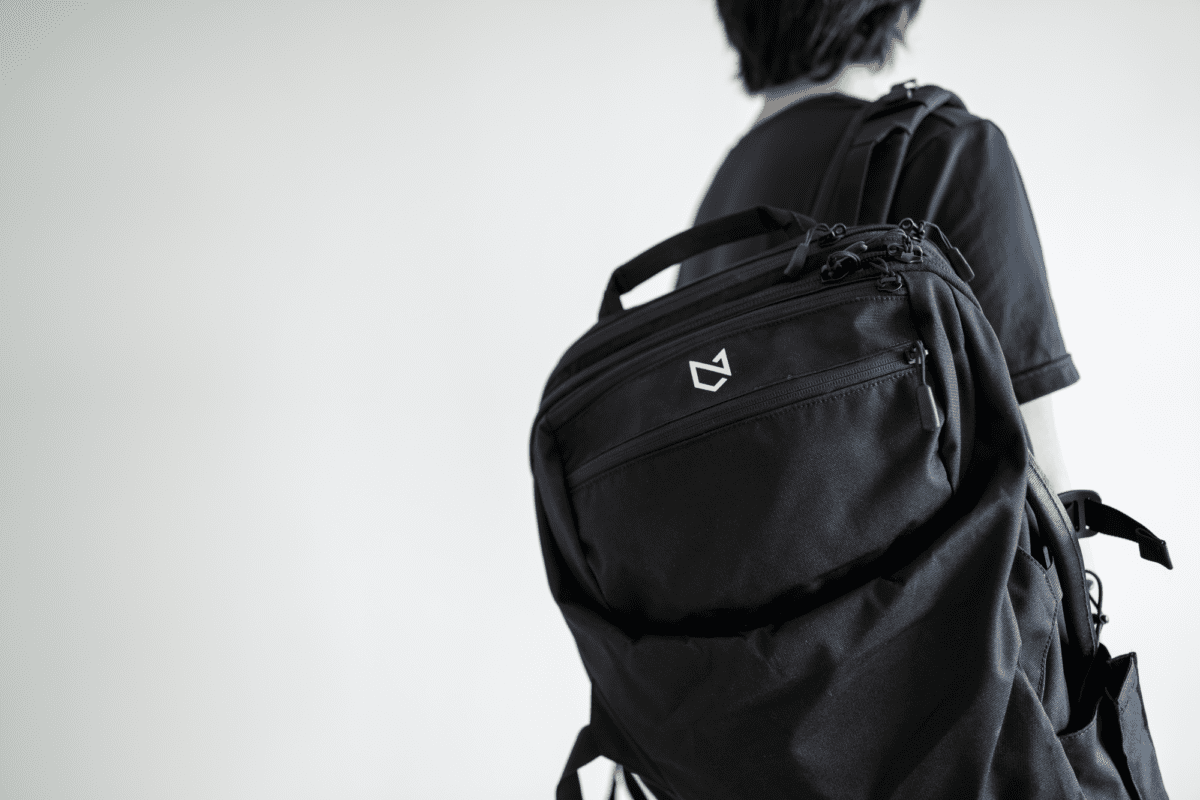
The silhouette of the bag stays largely the same, which also means that the parts that I didn't like in the last one remain.
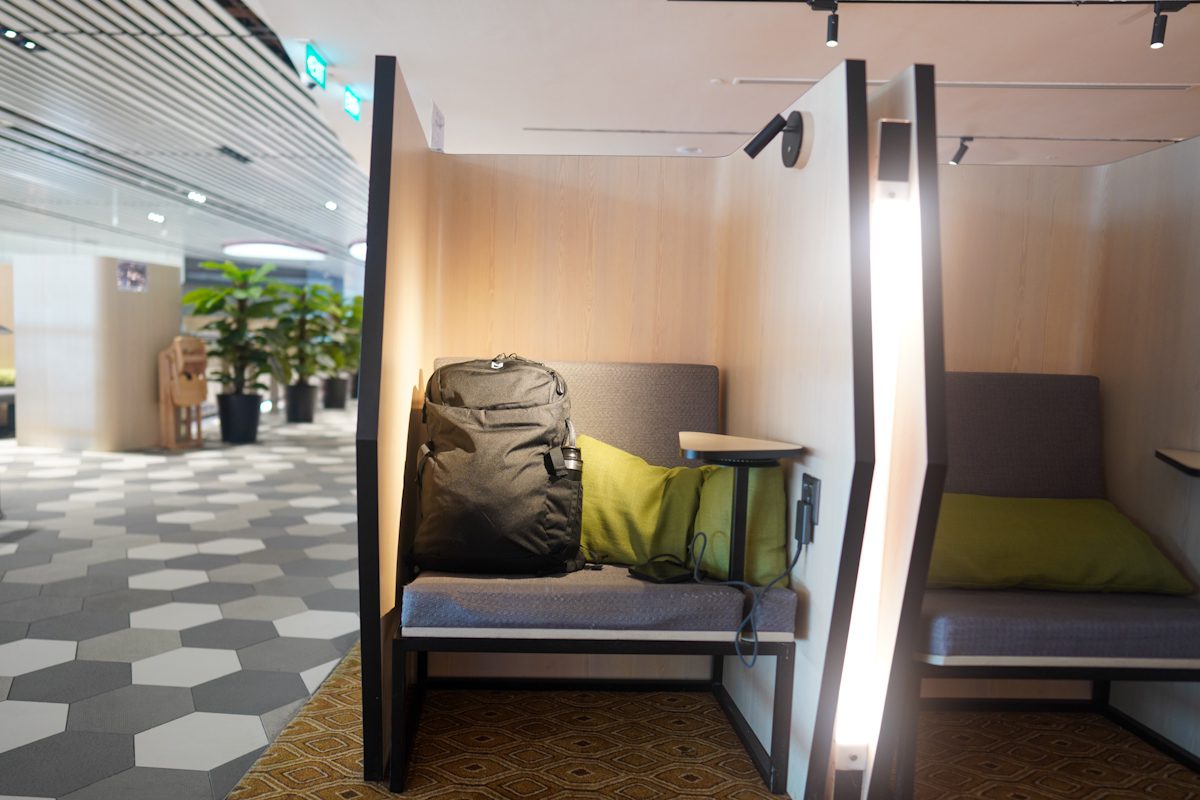
The water bottle pocket, while functional, makes the pack look clunky, and somewhat dorky if you had to use the elastic band to secure it.
Take a look at the Able Carry Max’s integrated water bottle pocket and you’ll get what I mean.
This used to be an ad.
But no one likes ads, so I got rid of them. If my articles helped you, I ask for your support so I can continue to provide unbiased reviews and recommendations. Every cent donated through Patreon will go into improving the quality of this site.
The quick access on the top is another aspect that distracts from an otherwise minimalist aesthetic. I love how functional it is, but the seam that goes across the bag could perhaps be hidden better.
I wouldn't count on the material looking pristine. The slubbiness tends to scrape and collect dirt, so you'll see white marks forming regularly. These are also pretty hard to wipe off with wet tissues since the abrasiveness of the texture would scrape off the tissue fibers.
Material
What's new on the 3.0 is the 600D Picton fabric, made from recycled yarn. Recycled material is usually cheaper and in this case, it is even tougher and attracts less hair and fluff. So, it's an all-around good.
600D is the denier count. This means that it is suitable for medium-duty applications. At the high abrasion areas like the base of the pack, it comes in 1200D. I tend to place my pack down on whatever surface without a care and this eases my mind quite a bit.
It has the standard water resistance but is not waterproof. There doesn't seem to be any additional waterproofing, like Outlier adds to their pants because a rain cover is already included. This also means that you can probably clean it without worrying about rubbing off any coatings or treatments.
I could not detect any difference in quality between the 3.0 and the previous iteration. However, Minaal measured a 22% increase in tear strength, a 35% increase in water resistance, and a 7% increase in abrasion resistance. In reality, you are unlikely to face any conditions that would enjoy these extra benefits unless you are taking it to a warzone.

To further ease your mind, Minaal's warranty covers any common sense defects so you can get it repaired or exchanged if any part does break down. This does not apply to wear and tear, however.
Usage
I took this as my only backpack for a week-long trip to Jakarta. I took a budget airline with a limit of 7kg. I packed about 9kg worth of stuff, ready to stuff my pockets if necessary. But there weren't stringent checks since I could check-in online and go straight to the gate. The weight of the pack itself, at 3.12lb / 1.47kg, helped tremendously.
I designed a thing.

I found a 100 year old company that would create these heirloom quality canisters for me. They are handmade and will keep your tea leaves, coffee beans or anything that you need dry for years to come.
or read review
Quick access pockets
Most backpacks have at least one quick-access pocket. Having two was something I never thought I needed, until the Minaal Carry-On. As someone who is quite the maximalist when it comes to EDC items, more pockets help. They fit an impressive amount; I have my wallet, keys, alcohol spray bottle, Buff Headband, face mask, Sony WF-1000XM4, Raen Sunglasses, and RUGGED & DAPPER Organic Lip Balm.
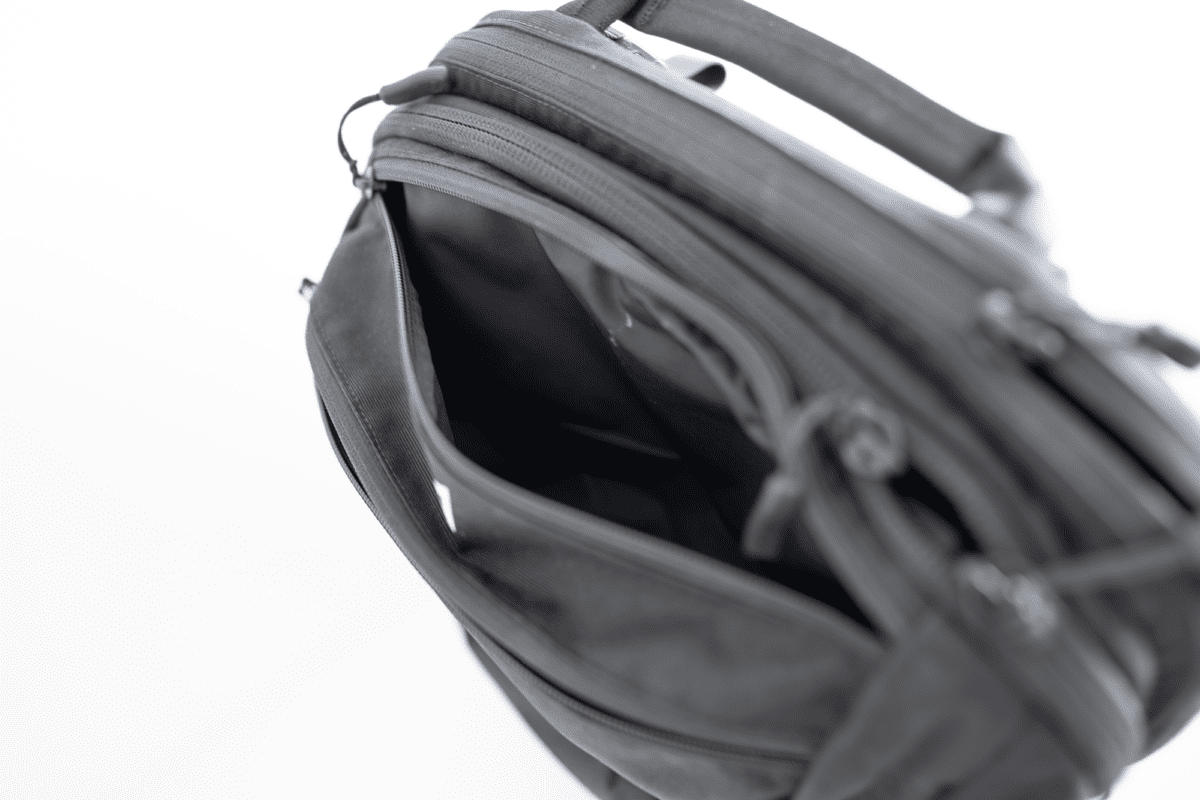
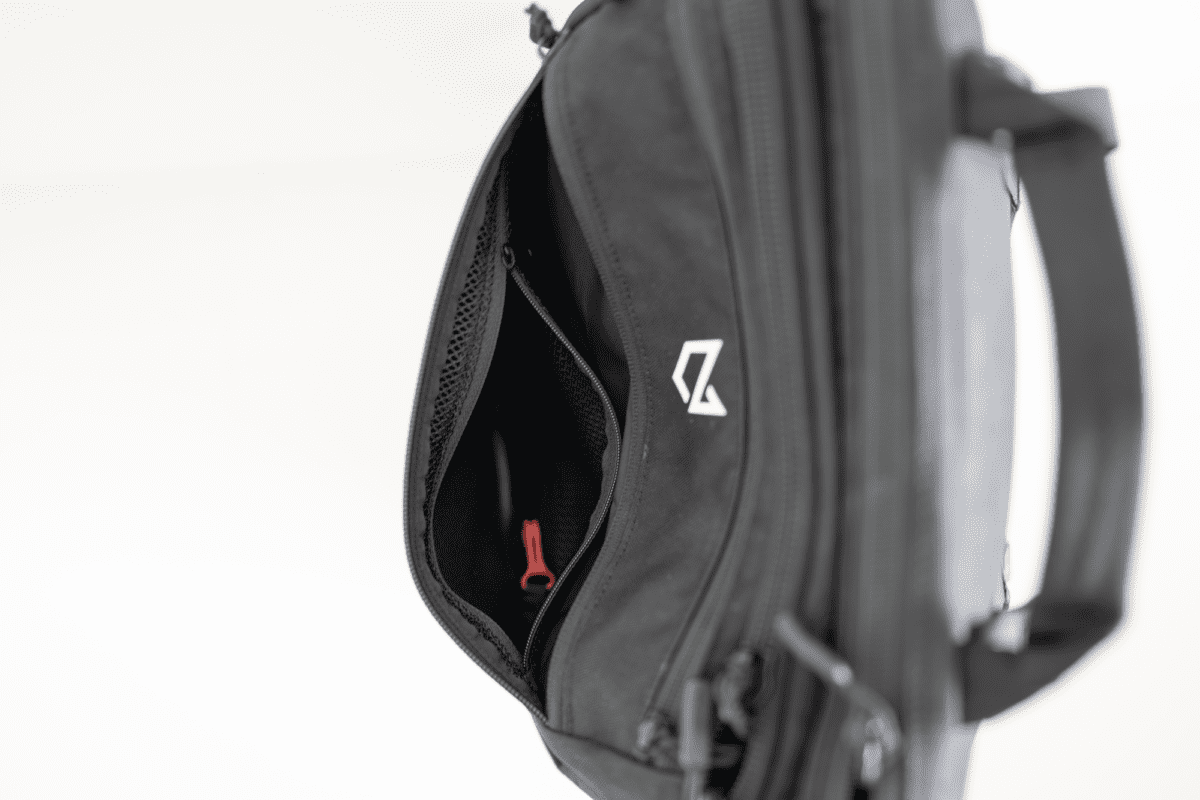
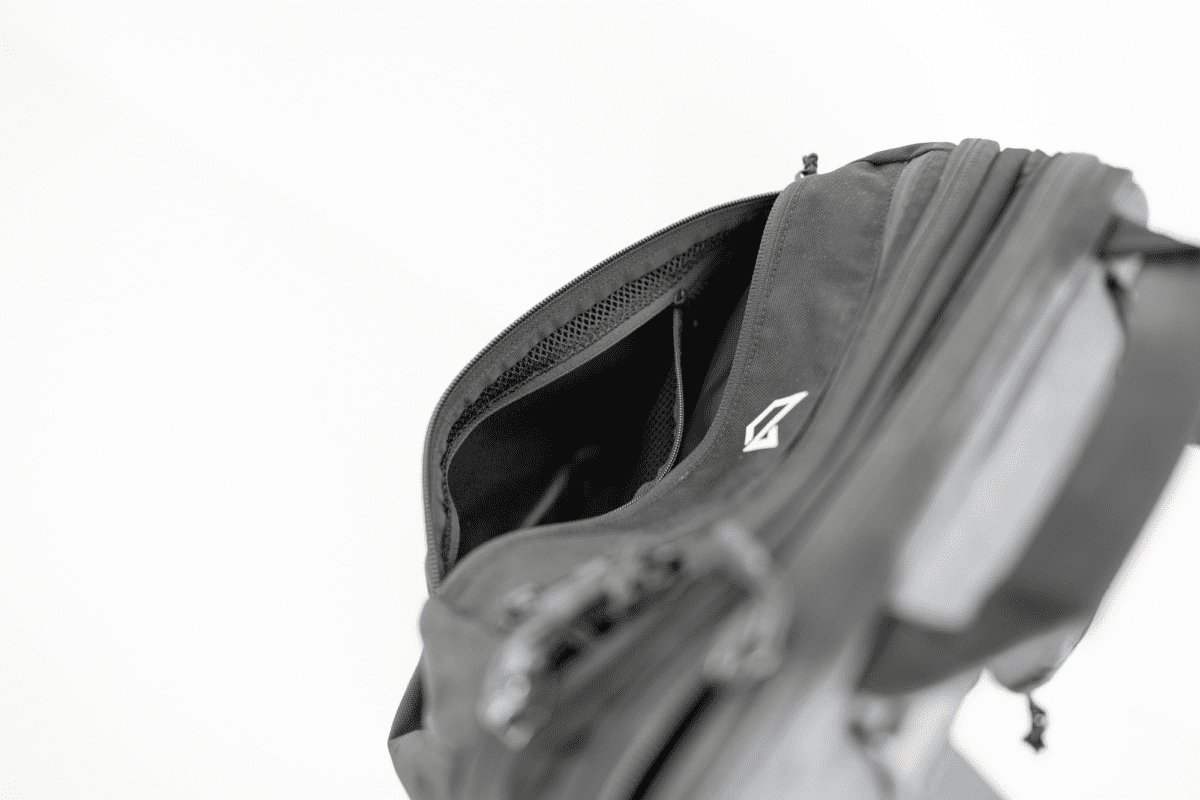
While there's a secret compartment for your passport, I often put my passport in the larger quick-access pocket when I'm at the airport. Pickpockets aren't as rampant in the cities I visit, so I prioritize convenience most of the time.
One is stacked on top of the other, with one being larger than the other. Unless you use this bag often and have an established packing system you follow, it is easy to forget which of the two you put something in. This was the case for me seeing as it was my first trip with the bag
Even if you do know which pocket, you might sometimes unzip the wrong pocket if you reach for it blindly as the zippers are relatively near each other.
Main compartment
The main compartment is spacious, but pretty basic in terms of features. There are two mesh pockets on the front side. I especially like the top one since you can grab stuff without digging into the bag. I have my UNIQLO bucket hat and a packet of wet tissues in there.
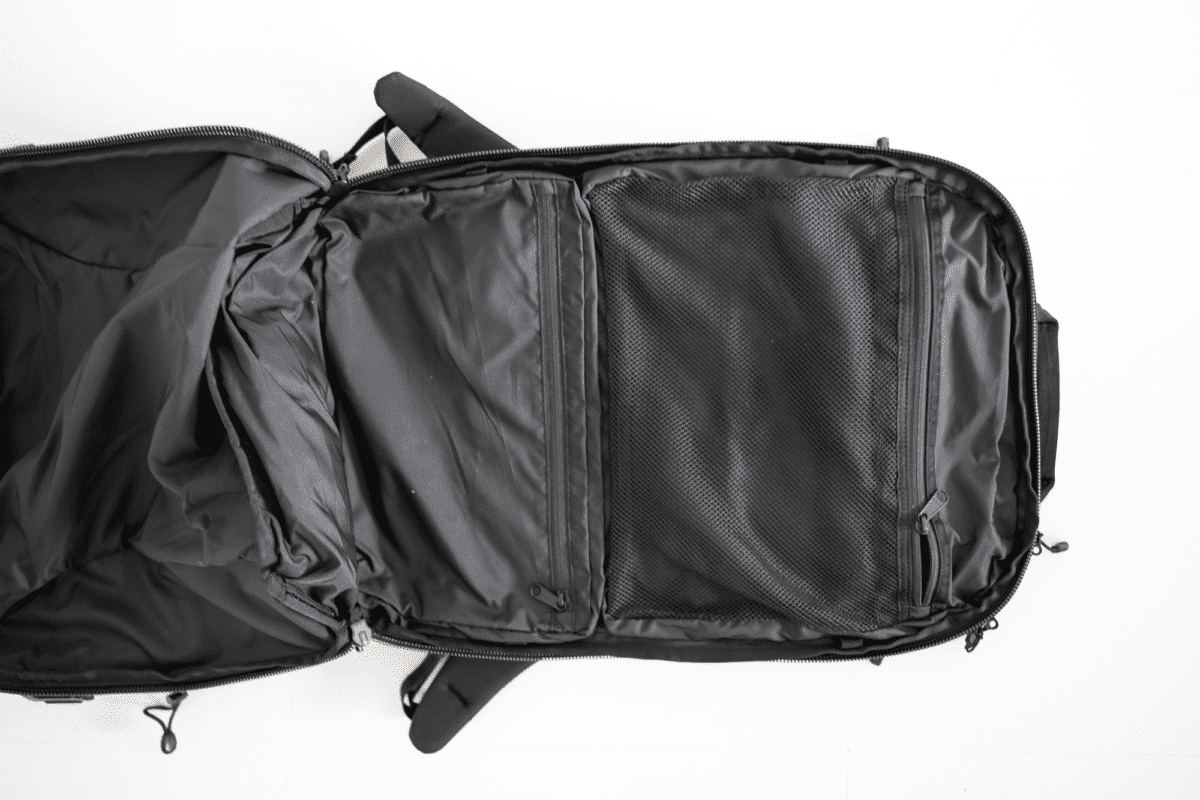
It opens flat, which is a standard feature in backpacks of this tier. Space-wise, I could fit quite a bit; two large packing cubes and about three pouches worth of stuff, including my camera—everything I needed for my week-long trip.
Laptop compartment
This compartment lies flat as well and has a document sleeve, a sleeve in front of it they call DeviceNest, and a pen pocket.
I'm not sure about the necessity to have this open clamshell-style. I would prefer it if it was accessible from two sides, so there is some rigidity when taking your devices in and out. With a clamshell-style opening, you risk opening it too much and it would be disastrous if your overpriced Apple products fall out and you'll have to pay for an exorbitant screen replacement.
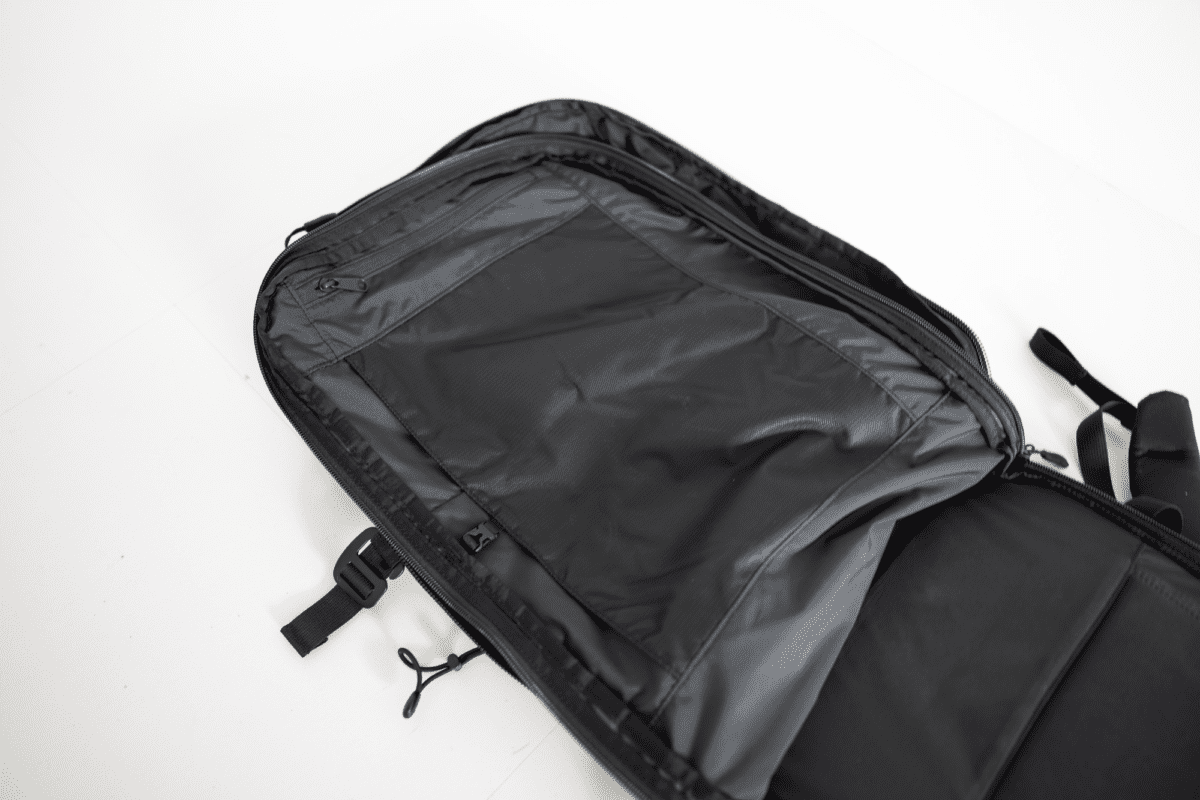
The document sleeve fits my 16-inch Macbook Pro, while the DeviceNest fits my 12.9-inch iPad Pro. I found the DeviceNest rather gimmicky. Being able to slot your device in from two sides makes it unnecessarily complicated. Having more options usually isn't a problem, but my iPad sometimes gets stuck on the way down into the slot because of how the slot was designed.
There's a strap on the two open sides to let you tie down your laptop from slippage. What's more, there are some slots to put the strap through that will shorten the strap so you can secure the devices better. Attention to detail is great, but sometimes you have to learn which features to say no to, and this felt like one of them.
Like the two open sides, this felt unnecessary. The experience of putting the strap through the slots is also very clunky and you can't do it with the device in place. So you have to put the device in to gauge which slot to shorten the strap to, and take the device out and slot it through. Even then, it's easy to slot it through the wrong slot and end up having it too short.

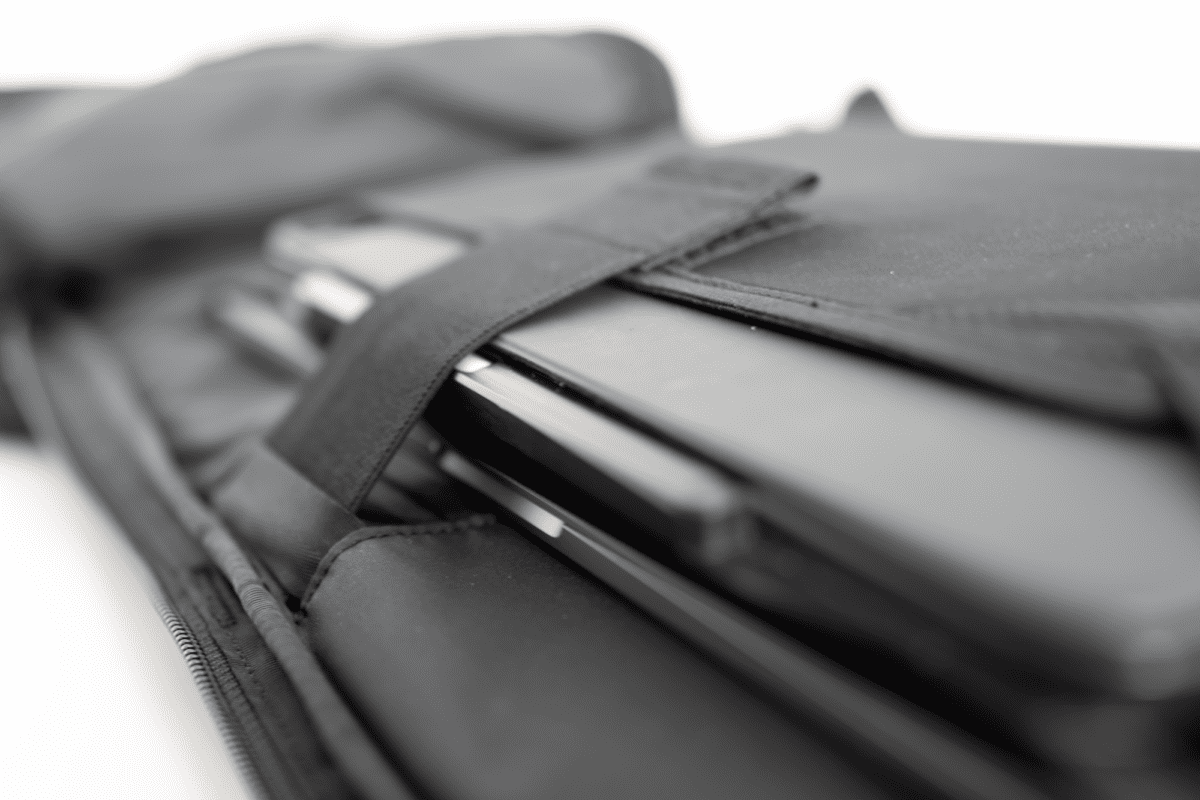
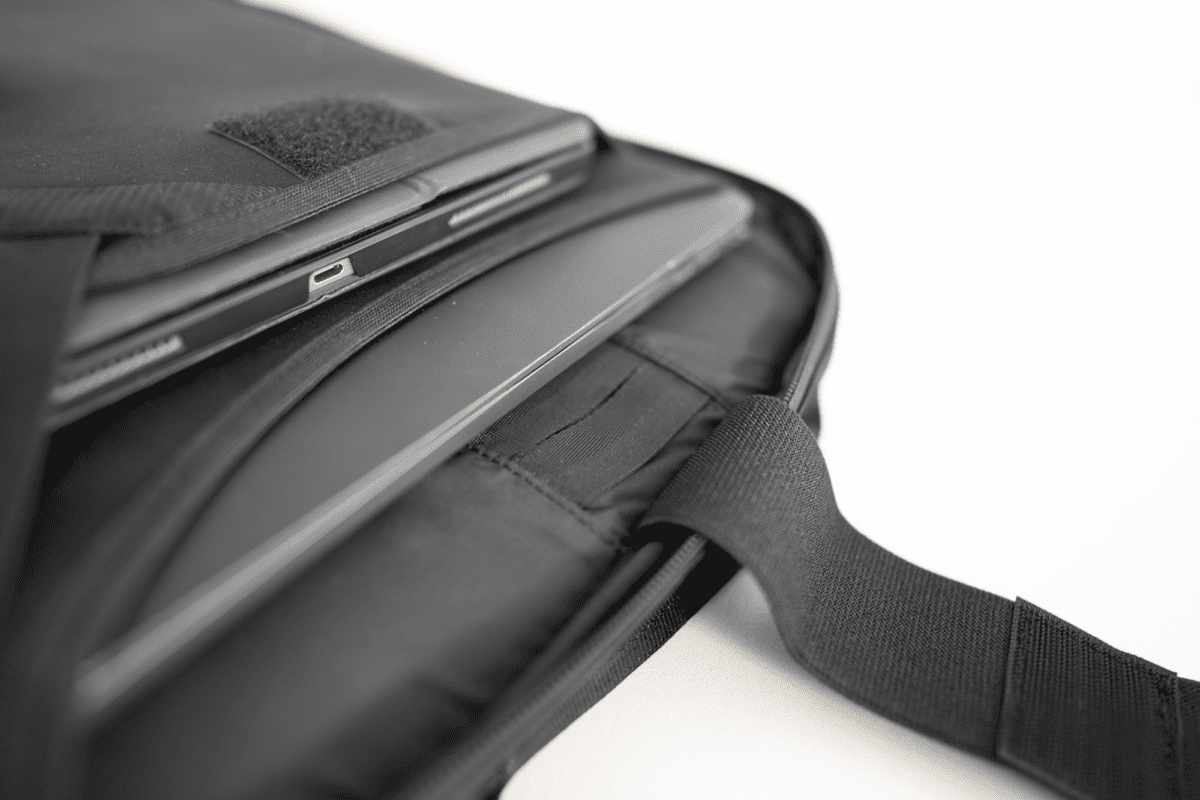
Unified harness
With 3.0, there is a new harness that is supposed to be more comfortable to carry. With the 2.0 up there in terms of comfort, I didn't quite feel much difference. It has been redesigned for longer journeys, but as a city explorer, I don't see any times where I would have this pack for too long a time. I often put it down on public transportation so there isn't any prolonged feeling on my shoulders.
The harness felt very ergonomic, and while comfortable, was not as comfortable as the edgeless shoulder straps TOM BIHN has, like on the TOM BIHN Techonaut.
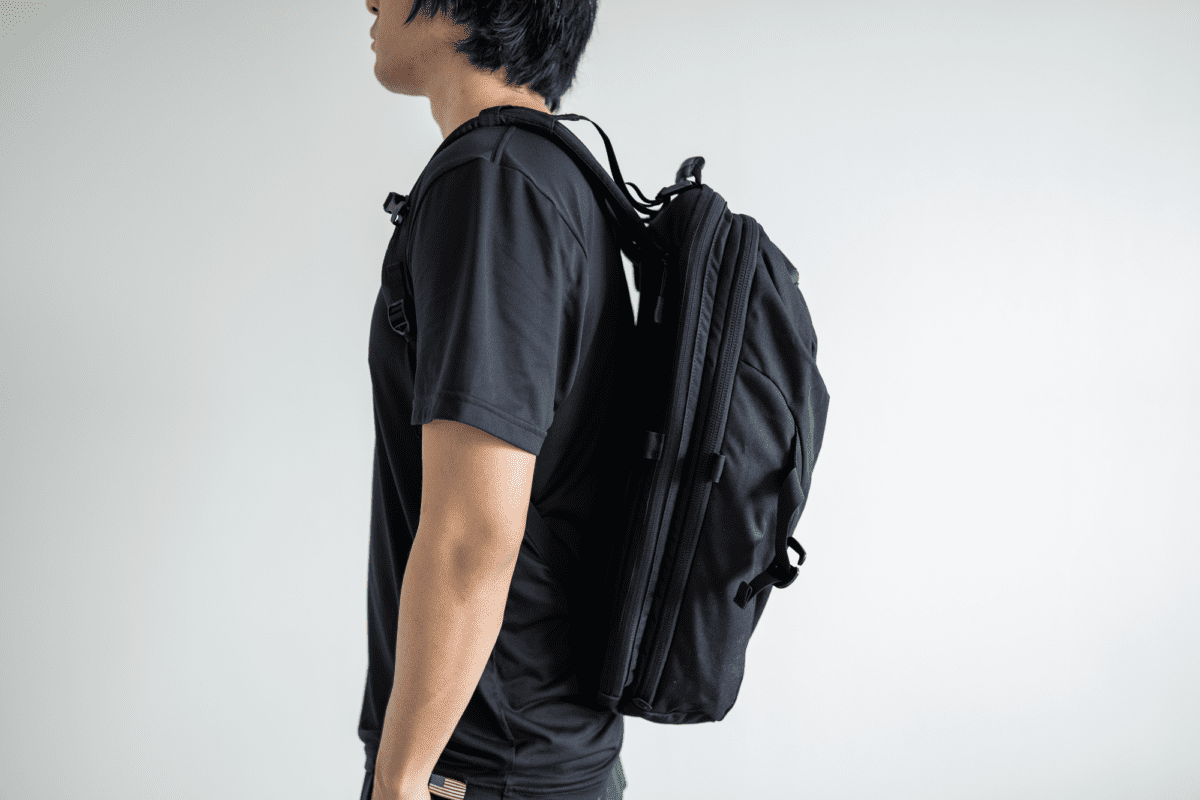
The four-point adjustment system helped me customize where the load was born. You can pull the straps on the shoulders or at the bottom to get the backpack in the right position. You can do so with the backpack on your back which lets you feel around for the right adjustment setting.
Secret pocket
There's a secret pocket in the back panel designed for your passport. While it might be catastrophic to lose your passport on a trip, it isn't something pickpockets go far since it offers no immediate reward.
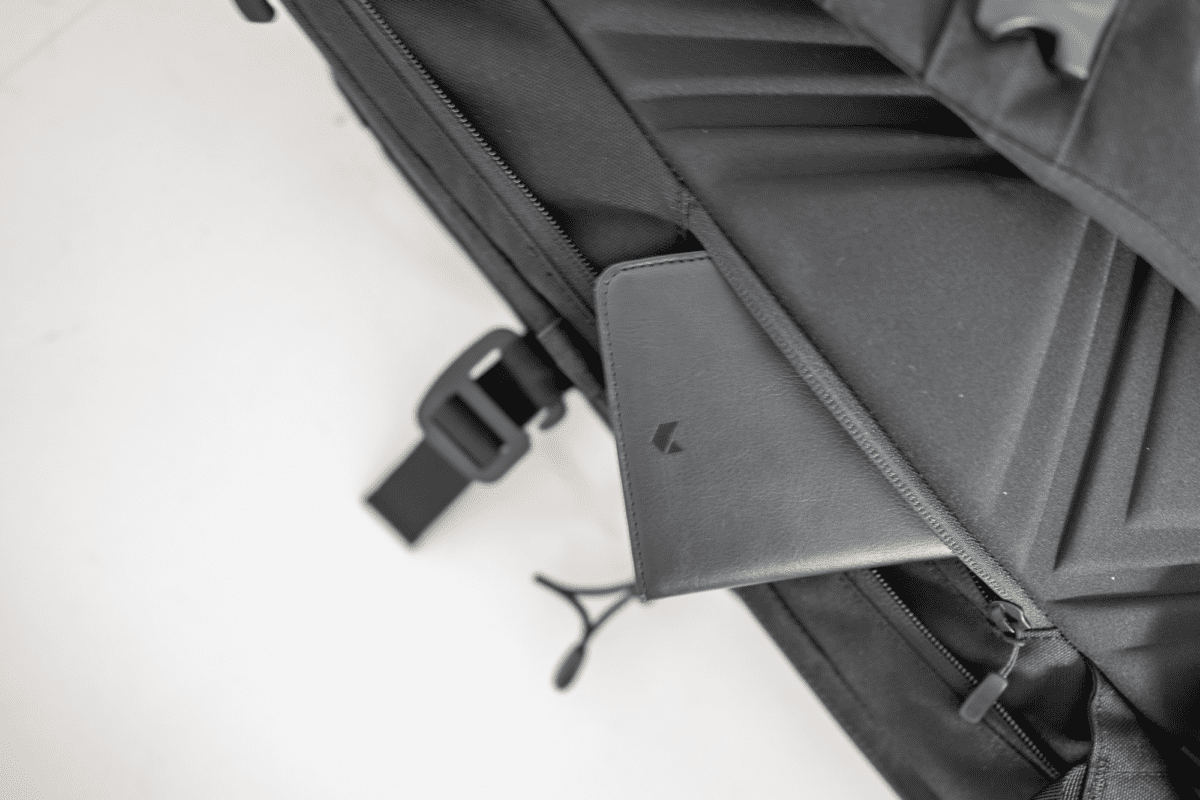
I prefer keeping my passport in the bottom mesh pocket in the main compartment. I do use this compartment to put my wallet in sketchier areas.
It might also be a good spot for a tracker since it wouldn't be an obvious place to look for a pocket.
Conclusion
The 3.0 takes the 2.0 to the next level with a new material and improved harness. If you already own a Carry-On 2.0, I don't feel like the improvements are worth getting a whole new backpack. However, if you are in the market for a new travel backpack, this is great for those who like a thoughtful organization with solid materials and craftsmanship.
Like this review? See all of my in-depth reviews.
Also, consider supporting me by being a Patreon. Every cent given will go back into improving the content of this website.
Tagged backpack bag minaal review water-resistant